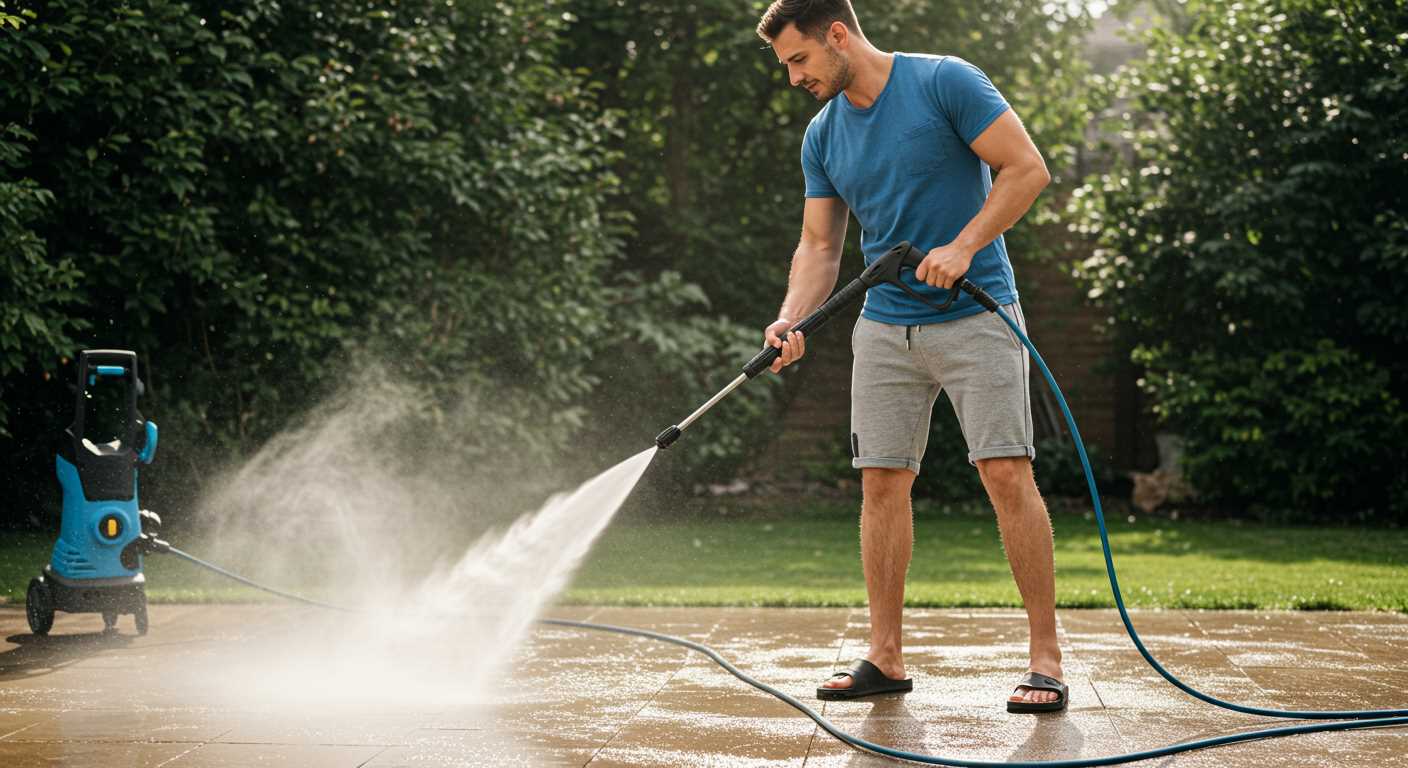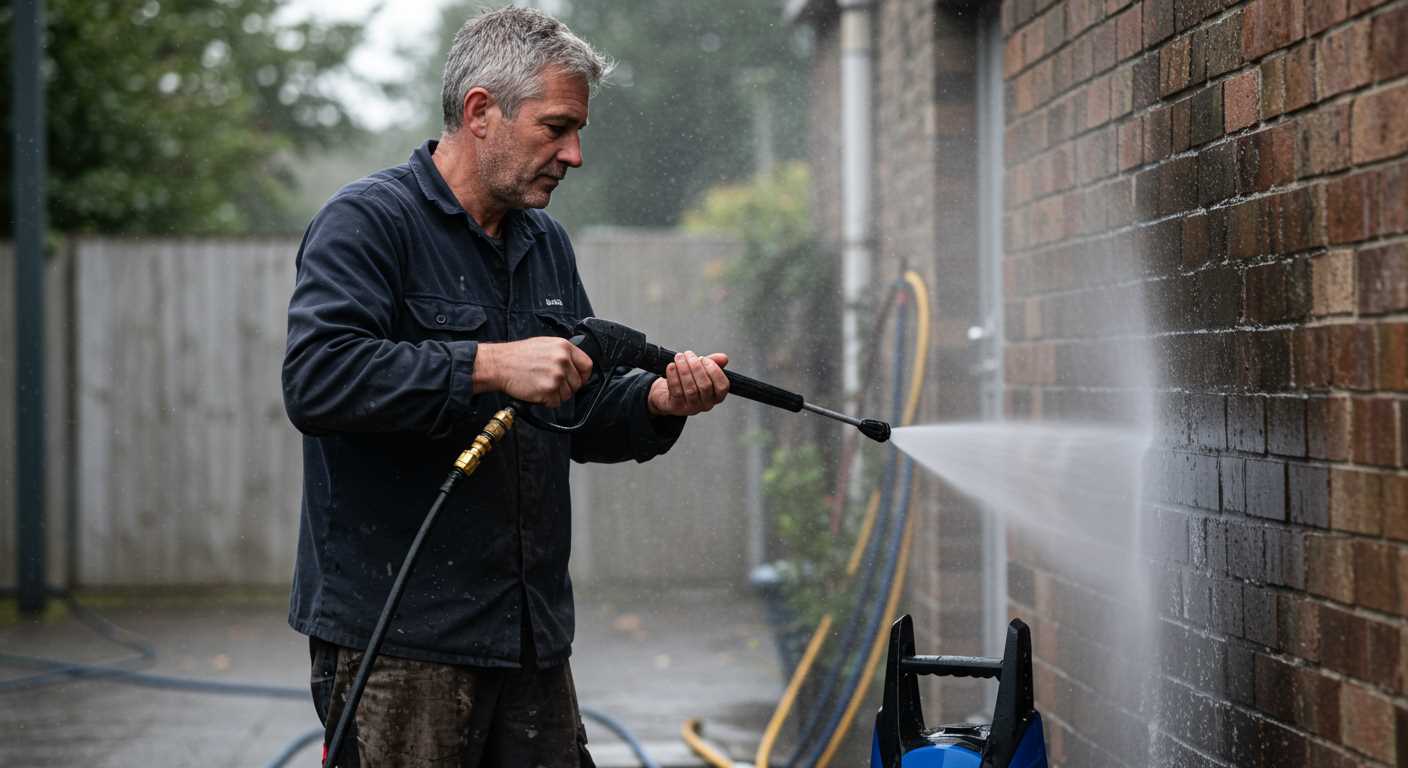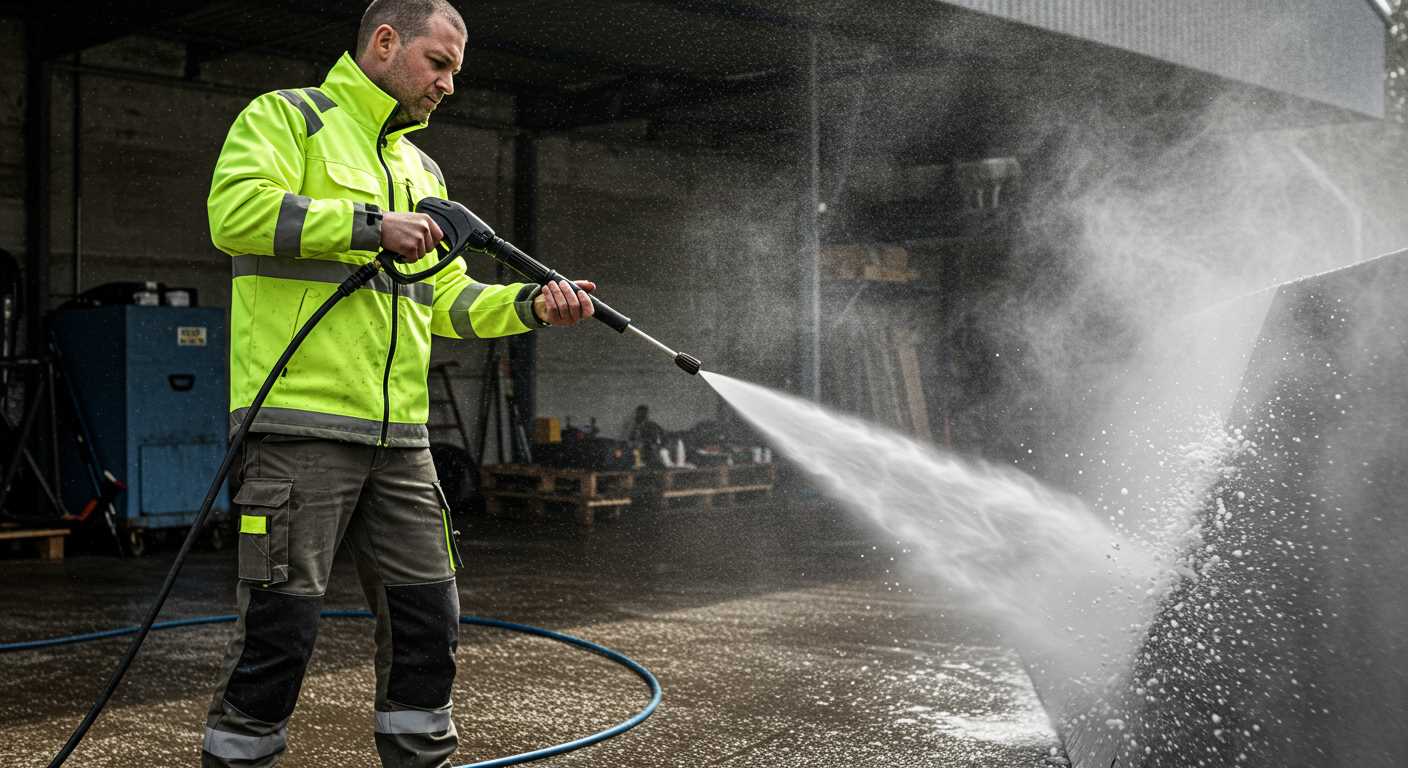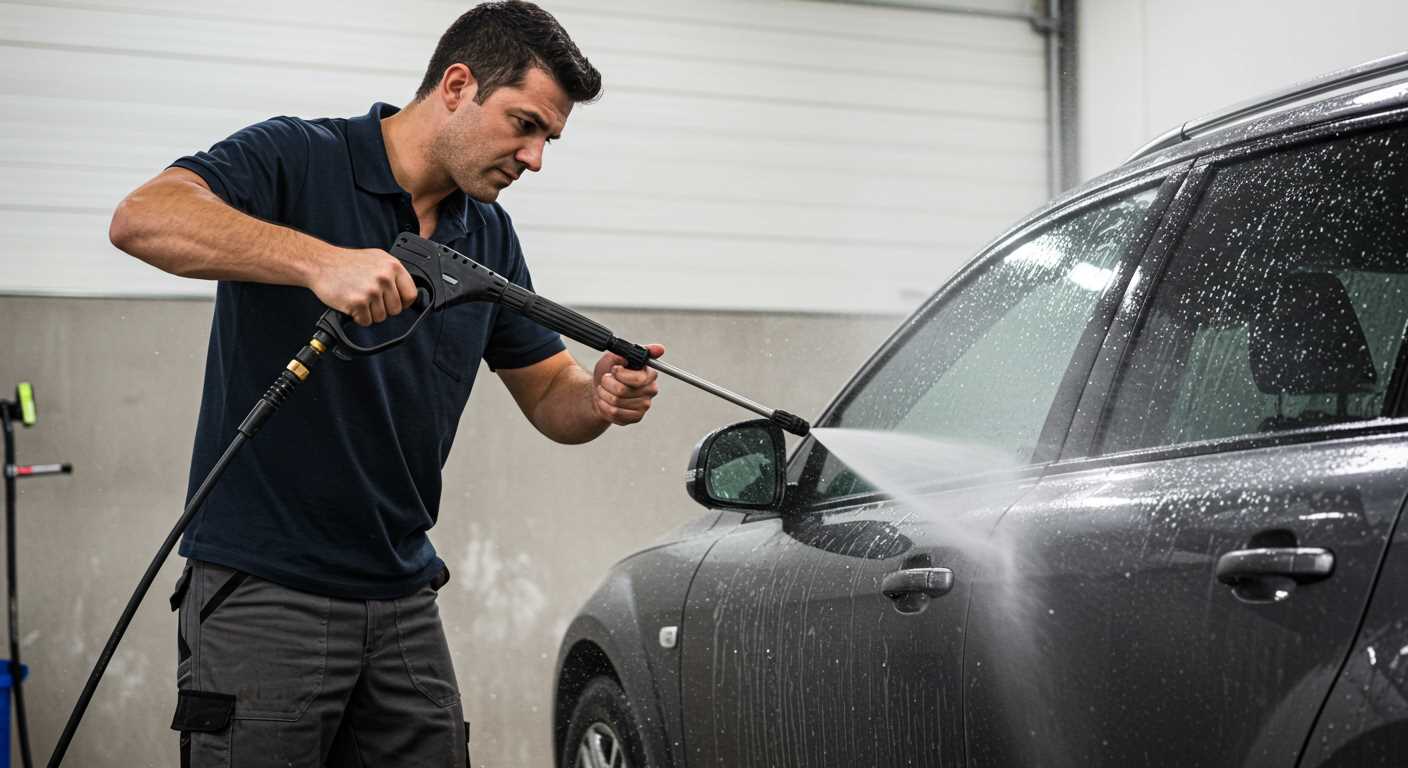Adjust your nozzle size–using a narrower spray can significantly enhance the force produced by your machine. The smaller opening concentrates the water flow, resulting in a more intense jet suitable for tough cleaning tasks. Choose the right nozzle based on the surface you are addressing: a 0-degree nozzle for stubborn grime, or a 25-degree for general cleaning. Testing various options allows you to find the perfect fit for your needs.
Regular maintenance is key. Flush the unit and inspect filters often to ensure they’re free of debris. A clean inlet filter will prevent clogs that diminish power. Replace worn seals and gaskets as necessary, as these parts directly impact output performance. Additionally, check hose conditions; cracks and kinks can hinder water flow, reducing overall power.
Adjusting the water supply can also yield impressive results. Ensure you have a steady and adequate source–this helps maintain optimal performance. If using a garden hose, opt for one with a larger diameter for better flow. This attention to detail can make a considerable difference in the output pressure during use.
Finally, consider your cleaning solution. Using the wrong detergent may hinder performance rather than assist it. Select compatible products that are designed to work with your model, enhancing effectiveness while keeping the equipment in good shape. These careful choices collectively maximise the potential of your cleaning apparatus.
Understanding Pressure Washer Bar Ratings

The force exerted by these machines is quantified in bars, a crucial specification to consider when evaluating performance. A higher rating indicates greater cleaning strength, and it’s imperative to recognise how this number influences efficiency in various applications.
Key aspects to consider regarding this rating include:
- Measurement: A bar is equal to 14.5 psi (pounds per square inch). Thus, a unit rated at 100 bars delivers approximately 1450 psi. Familiarity with this conversion helps in choosing the right equipment.
- Usage Requirements: Different tasks necessitate varying pressure levels. For delicate surfaces like wood, lower ratings are recommended, whereas hard surfaces may require higher ratings.
- Flow Rate: This is measured in litres per minute (LPM) and complements the pressure rating. A high flow rate can enhance cleaning efficiency, especially when combined with a suitable pressure level.
Consider matching the device to the specific cleaning needs, as excessive pressure may cause damage while insufficient pressure could lead to ineffective cleaning. Always consult manufacturer guidelines for optimal pressure settings based on the task at hand.
Assessing accessories, such as nozzles, is equally significant. Different attachments can alter the effective pressure and greatly impact performance. Selecting the proper nozzle can result in improved cleaning effectiveness without the need for excessive pressure.
In conclusion, understanding the relationship between pressure ratings and cleaning applications allows for better utilisation of equipment. Knowing these specifications ensures achieving desired results while maintaining the integrity of the surfaces being cleaned.
Optimising Nozzle Selection for Higher Pressure

Selecting the right nozzle is crucial for enhancing your cleaning unit’s performance. I recommend using a narrow-angle nozzle, like a 0° or 15° option, to concentrate the water stream. This approach increases impact force and improves cleaning effectiveness on stubborn stains.
Understanding Nozzle Types

Nozzles vary in angle and size, affecting how water exits the sprayer. The narrower the angle, the higher the pressure applied to a surface. For tougher jobs, opt for nozzles that reduce the water flow while maintaining a high force. However, for delicate surfaces, wider angles prevent damage while still providing adequate cleaning.
Material Considerations
Consider the construction of the nozzle as well. Stainless steel nozzles last longer and withstand higher pressures than their plastic counterparts. Investing in durable materials can ensure consistent performance and reduce future replacement costs.
Lastly, always check your equipment’s specifications. Some units deliver best results with specific nozzle types, and using the recommended options will prevent wear and optimise cleaning efficiency.
Maintaining Your Pressure Washer for Peak Performance
Regularly checking and replacing the oil in your equipment is vital for prolonged functionality. Use manufacturer-recommended oil types and follow the suggested change intervals to keep the engine running smoothly.
Examine the intake filter frequently. A clogged filter restricts airflow, affecting performance. Clean or replace it as recommended in the user manual to ensure optimal air circulation.
Inspect the high-pressure hose for cracks or wear. A damaged hose can lead to pressure loss and safety hazards. If you notice any issues, it’s best to replace the hose promptly.
Keep the spray gun and nozzle free from debris. After each use, flush them with water to prevent build-up that can impede flow. Using a nozzle cleaner can help remove stubborn clogs.
Check all connections and fittings regularly for leaks. Tighten any loose components. If seals are worn or damaged, replace them to maintain the integrity of the system.
Store your device in a dry, protected location to prevent rust and damage from environmental factors. Use a cover if storing it long-term to shield it from dust and moisture.
Lastly, consult the owner’s manual for any specific maintenance recommendations. Each model may have unique requirements that ensure longevity and optimal performance, reflecting on the reliability you should expect from your equipment.
Adjusting Water Supply for Increased Bar Output
Optimize water flow rate by ensuring a minimum supply of 8-10 litres per minute. This can significantly enhance the pressure generated by the unit.
Check the water source. Use a hose with a diameter of at least 12 mm, as narrower hoses restrict flow and pressure levels. Additionally, ensure the hose is free from kinks and blockages.
Consider an additional water reservoir or tank if connecting to a tap proves insufficient. This setup can provide a consistent flow, preventing sudden drops in pressure during operation.
Inspect the input filter on the unit. A clogged filter hampers water intake, so regular cleaning or replacement is advisable to maintain optimal performance.
Adjust the tap valve to maximize flow without over-restricting the inlet. This may require experimentation to find the best setting that balances flow and pressure output.
Ensure the water temperature is suitable–ideally between 15°C and 20°C. Cold water systems generally perform better within this range, ensuring optimal pressure levels during use.
Test with different pressure settings, if available. Lower pressure settings might still provide sufficient cleaning performance while operating at higher efficiencies.
Ultimately, a consistent and adequate water supply lays the groundwork for maximizing output, leading to improved cleaning results and overall satisfaction with the equipment.
Upgrading Hose and Accessories for Better Performance
Investing in a higher-quality hose can significantly enhance efficiency. Opt for a hose with a smaller inner diameter which can help increase force. A 3/8-inch hose often provides superior delivery compared to 1/4-inch models, allowing for better fluid dynamics.
Choosing the Right Accessories

Quality attachments play an important role. A reinforced connection will reduce the risk of leaks that could diminish power. Look for quick-connect fittings that ensure a tight seal and minimize pressure loss.
Specialised nozzles are crucial. Turbo nozzles create a spinning effect, concentrating the water flow for a more powerful impact than traditional flat or fan nozzles. Ensure the nozzle is compatible with your equipment to maintain optimal operation.
Using Extension Wands
Consider adding an extension wand to improve reach while maintaining force. Longer wands can help direct the water flow into tight areas without needing to compromise pressure levels. Ensure the extension matches the diameter of the original wand to preserve performance.
Regular replacements of worn accessories guarantee peak functionality. Inspect all components frequently and act upon any signs of wear. Upgrading hoses and attachments will result in a noticeable improvement in cleaning ability and overall performance.
Troubleshooting Common Issues Affecting Pressure Output
Inspect the filter regularly for clogs, as a blocked inlet can severely lower operational strength. A clean filter facilitates better water flow, promoting optimal performance.
Check the connections between hoses and fittings. Loose or damaged parts can cause leaks, which directly reduce output. Ensure all attachments are secure and in good condition. If any component shows wear, consider replacing it.
Monitor the inlet water temperature. Water that is too hot may result in a decrease in efficiency. Ideally, the temperature should stay below 60°C to maintain proper functionality.
Examine the pump for any signs of wear or damage. A malfunctioning pump can lead to inconsistent performance. Regular maintenance and timely repairs will extend its lifespan and enhance efficiency.
Inspect hose integrity for any kinks or blockages. A damaged hose disrupts water flow, affecting the unit’s overall effectiveness. Replace any compromised sections to restore full capacity.
Evaluate the power supply. Inadequate voltage can affect performance. Make sure your equipment is receiving the correct electrical input, as fluctuations can reduce output levels.
Keep the nozzle clean. Residue buildup can impede the water stream, causing a weaker spray. Regularly clean or replace any clogged or worn nozzles for improved results.
Review the detergent system. Incorrect or excessive use of soap can create unwanted foam, impairing functionality. Use the recommended amount of detergent and adjust as necessary to avoid interference.






